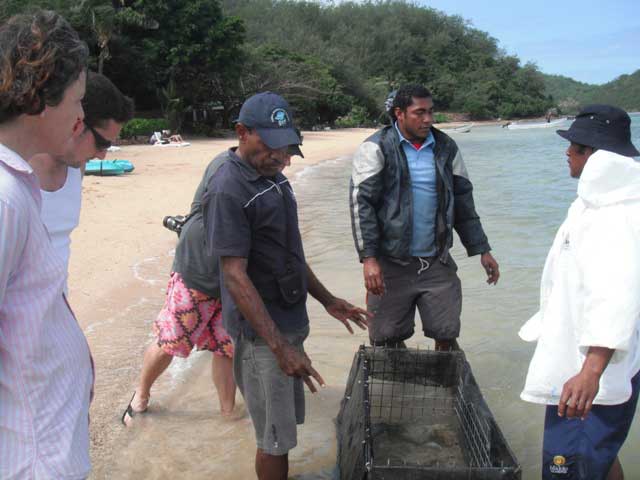Giant clams have been a sustainable resource for millennia, but unregulated harvesting has made them increasingly rare to find on our reefs.
And because it has become an important module in the process of repopulating depleted coral reefs around the globe, Mamanuca Environment Society’s Clam Restoration Project was introduced to Likuliku Lagoon Resort and Malolo Island Resort on Monday August 6.
Forty young clams from Makogai Island were shared between the two Ahura managed resorts. They were placed in large steel cages to protect them from predators, like octopus, crabs and parrotfish.
The cage was placed at the house reef where they will spend 3-10 years for giant clams to mature from larvae into a clam large enough to be safe on the reef.
Mamanuca Environment Society Media and Public Relation Officer Emosi Lasaqa said the Giant clam project started in 2005 and Baby clams were supplied by the Fisheries Department nursery on Makogai Island to requesting resorts.
“MES assists in planting these clams at selected sites with the aim of increasing the clam population and also aiding in the coral growth.”
“The project was exceptionally successful. It has met its objectives and developed institutions and local capacities to sustain and expand project results. The large number of volunteers indicates that this project is perceived as an attractive initiative which provides sense of ownership, achievement, opportunities for development.”
“Giant clams are an endangered species and are nearly extinct from our reefs because they are heavily traded for aquariums, restaurants, and as souvenirs. Because they need sunlight for food, sedimentation churned up by coastal development has seriously threatened their survival.”
Giant clams are the largest molluscs on Earth capable of reaching 1.4m in length and weighing over 330kg.
There are 9 species of giant clams and just like the coral polyp they house the symbiotic algae (zooxanthellae) that provide it with sugars, proteins and also giving it their brilliant colours.
Besides the nutrition provided by this algae, clams use their siphon to suck in water and filter out all the nutrients and passing plankton in return supplying corals with clean nutrient free water.


